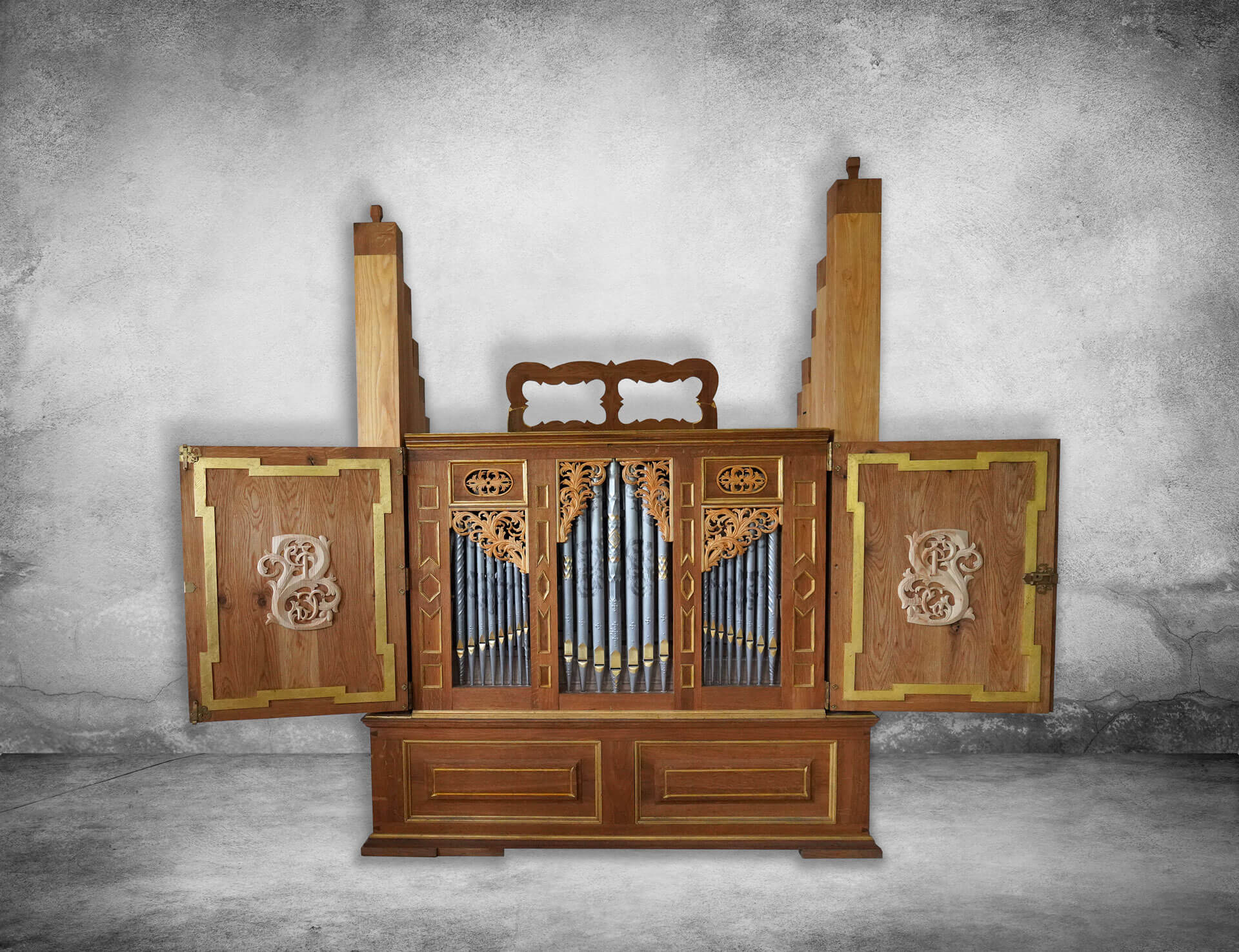This organ was made in 2013. The used style is richly decorated imitating the Baroque style with a unique closable organ prospectus inspired by the organ’s manufacturer Tomáš Kokštejn located in Borovany, South Bohemia. The advantage of this organ positive is easy decomposition to 4 (5) segments in case of moving:
High quality oak wood is used for the support pedestal and main cabinet of this organ. Directly in the support pedestal there is located the wedge and parallel bellows. Blowing of the instrument is possible directly through the pedals or an electric blower. It can be installed to reduce the effort of the player. The design of the instrument is realized in a rich and magnificently decorated style corresponding to the characteristics of Baroque. You can admire fine hand-made linden carvings in the organ prospectus and back door.
Door leaves decorated with gilded moldings are hung on a massive brass hinge. It illustrates the robust and at the same time romantic style of the instrument. The whole set is completed by a classical oak air bladder with spruce partitions and oak plugs and organ pipe from the same wood’s types. The oak drawers with the leather seals and Spanish pivots confirm the high quality of manufactory. The player can enjoy the view of the inversely realized keyboard with full tones coated by ebony half tones from the beef bones. Not only to look at, but you can also touch in the head of keys which are decorated with small carvings with contours of birds.

The instrument has a range of C to c3 with a rich disposition. Moreover, it is divided in the keyboard into bass and discant. This design enabled the instrument to be used for both solo and basso continuo play.
In a bass part, there is 7 registers:
In a discant part, we can find 9 registers:
The instrument allows transposition at a1=415, 440 and 465.
You can find the bass part of Octav 2' in the organ prospectus. The aesthetic appearance of the pipes in this representative part of the instrument was accented by the gilding of the labia, embossing and engravings enhancing the carvings at the top of the prospectus.
In terms of used materials, the flute registers are wooden, the principals are made of a mixture of tin and lead in a ratio of 70 to 30. Their tuning is realized by sliding rings. The decoration of most of the organ pipes is performed in the Baroque style by twiddling or twisting. The bass organ pipes Copula major 8' located in the exterior of the instrument are manufactured from spruce wood. They are complemented by oak labia in the shape of an inverted heart.
Our Opus 1 organ has been borrowed several time for important events where it has evolved a pleasant atmosphere with its appearance and sound. Examples include:
Do not hesitate to contact us